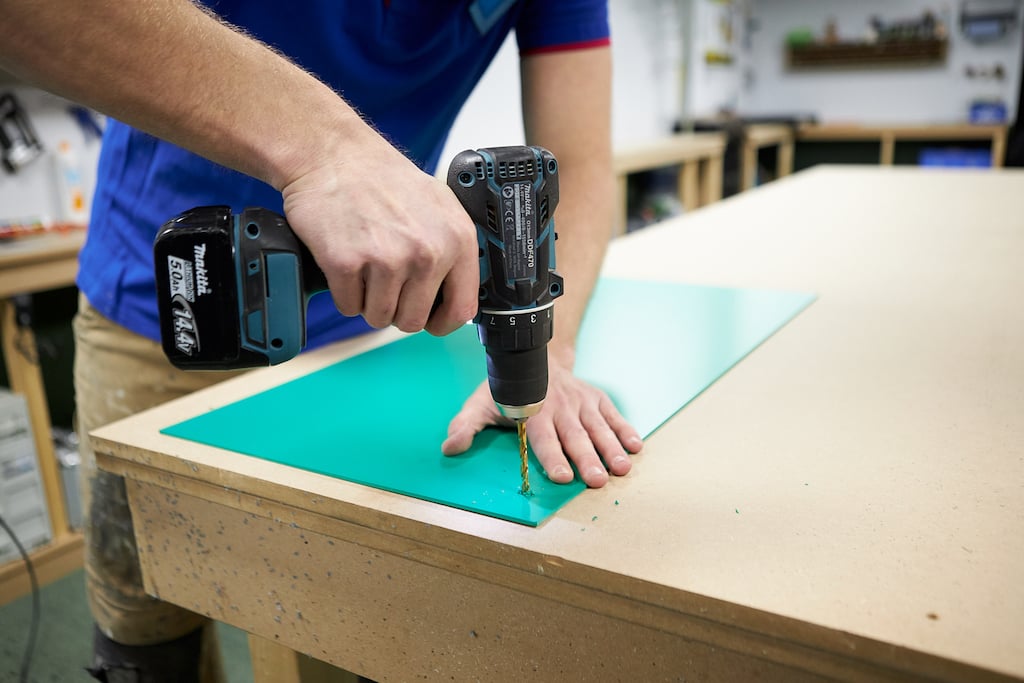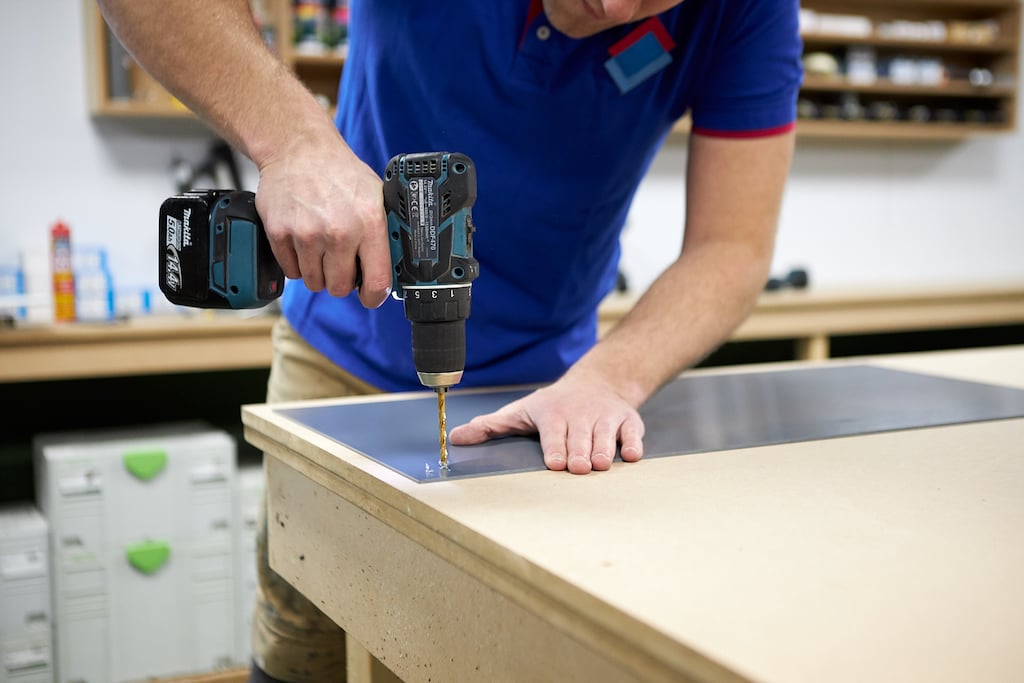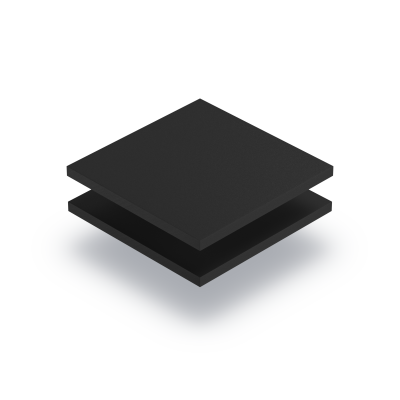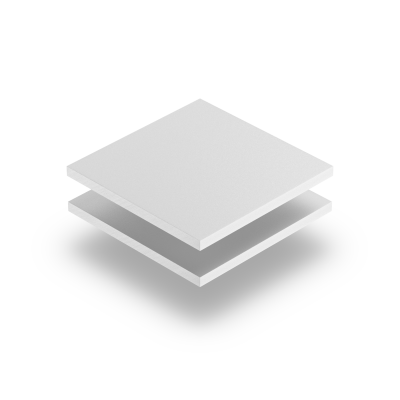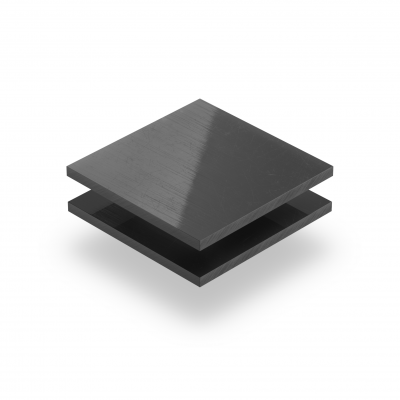Whether you’re giving your shop or making a billboard, PVC is the ideal material because it’s very easy to machine. With the right preparation, you can drill both foamed PVC and hard PVC sheets. In this blog, we bring you five tips to keep in mind when drilling holes in PVC.
Requirements for drilling PVC:
Before you start drilling through PVC …
When drilling plastic sheet material, you must support it. Ensure that you have a flat board to support your PVC sheet, into which your drill can run. Wood is the most suitable material for this purpose. Do you need more support? You can also clamp the sheet with glue clamps by laying one or more battens along the drill holes. It’s also essential to ensure that the distance between the sheet edge and the edge of the drill hole is at least twice the thickness of the PVC sheet.
For example:
If you’re drilling a PVC sheet with a thickness of 10 mm, the distance between the edge of the sheet and the edge of the drill hole must be 20 mm.
1. Use the right drill
If you’re drilling PVC, it’s best to use a metal drill. This principle applies to all types of plastic. Use a standard roll-rolled or HSS ground metal drill bit. The top angle must be between 60 and 90 degrees.
2. Keep everything clean when you’re drilling PVC
The following applies to all types of plastic sheet: leave the protective film on the sheet for as long as possible when you are going to machine it. This will help to prevent unnecessary scratches. By always placing the same side on the work table, you ensure that the other side of the plastic sheet is damaged as little as possible. A clean worktop is, of course, essential. Use a vacuum cleaner to remove any dust or chippings immediately, or the static charge means that the debris will adhere to the PVC.
Tip: Is your worktop grimy or in need of replacement? In our blog “DIY: making a worktop“, we explain how you can make an HPL worktop for your workbench.
3. Drill at the correct speed
The rule of thumb when drilling PVC is to bear in mind the speed of the drill. The thicker or harder the PVC sheet, the higher you must set the speed of the drill. This prevents the drill from overheating. With hard PVC, and in particular, thicker sheets, set the speed higher than with foamed PVC, which is a much softer material. Drilling at the right speed is not only faster and needs less effort, but it’s also better for your drill and ensures a better result.
4. Mark the holes on masking tape
Take the masking tape and stick it on the places where you’re going to drill. Mark the drill holes on the tape. You can also stick masking tape to the bottom of your sheet for protection. Then Now, you’re ready to start drilling. If you’re still not sure about the correct drill speed, drill some test holes first on a piece of scrap material.
5. Let the drill do the work
Keep the drill perpendicular to the PVC sheet and let it run at medium speed at first. Don’t apply too much pressure; let the drill do the work. It’s best not to use a new drill bit, but one that’s still sharp. Equally, the drill shouldn’t be too sharp, because it will cut into the plastic too quickly. While drilling, draw the bit out of the hole every now and then to dissipate heat and chips. Start with a small diameter drill bit and keep changing it with intermediate jumps until you reach the desired drill diameter. You can also use a hole drill or saw to create very large holes. Large holes can also be milled.
When do you drill foamed PVC?
Foamed PVC is mainly used for interior applications, such as shop fittings, billboards and stands. This material is also often used to create displays and presentations. Are you planning to work with PVC yourself? In our webshop, we offer an extensive range of both white and coloured foamed PVC in various thicknesses.
When do you drill hard PVC?
Hard PVC is used, among other things, for applications such as equipment construction, coverings for fume hoods, exterior wall cladding and water purification installations. Because the material is impermeable to gases and liquids, this material is frequently used in the chemical industry. In our webshop, you’ll discover hard PVC sheets in a range of thicknesses from 0.5 mm to 20 mm.
Questions about PVC drilling
Do you have questions about drilling PVC, or are you not sure about the materials you require? Please don’t hesitate to get in touch.


